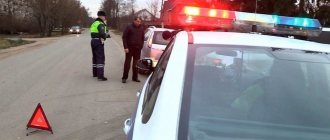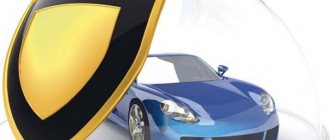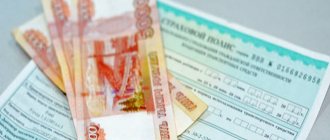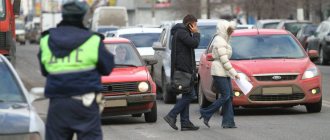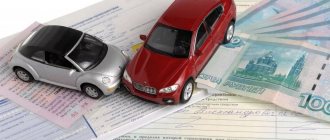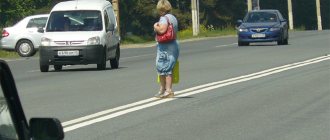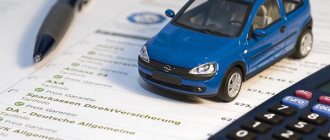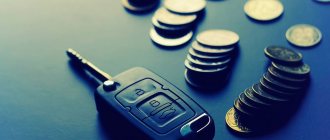Traffic regulations define pedestrians as full road users. If the driver does not give the pedestrian priority or hits him, he will be subject to administrative or criminal penalties. The current legislation is trying in every possible way to protect the rights of people crossing the roadway, because they are the most vulnerable road users. As a rule, it is the pedestrian who is most often seriously injured in an accident. And in some cases they turn out to be incompatible with life.
The insurance company of the person responsible for the accident pays the damage to the victim. To do this, the motorist must have a compulsory motor liability insurance policy. Moreover, the victim receives compensation regardless of the nature of the injuries and their severity. Any damage incurred as a result of the accident is compensated. Moreover, you can receive not only reimbursement of funds spent on treatment. Expenses for the period during which the victim was unable to work are also paid.
The pedestrian will not receive compensation only if he himself is the culprit of the accident. In such situations, a citizen may be required to pay the costs of the driver whose vehicle was damaged in the accident.
There was an accident with a pedestrian: what to do?
An accident involving a pedestrian is the most unpleasant situation for a motorist. Moreover, an accident can occur even if the driver complied with the speed limit and did not violate traffic rules. Most often, pedestrians get into accidents when they want to cross the road in the wrong place.
If it was not possible to avoid a collision with a pedestrian, the motorist must do the following:
- Stop the car and turn off the engine. It is necessary to turn on the hazard warning lights and place a corresponding sign on the road.
- The pedestrian must be given first aid. It should be moved or removed from the roadway so that it does not fall under the wheels of other vehicles.
- We call traffic police officers and an ambulance to the scene. Even if the pedestrian refused medical help, an ambulance must be called.
- Wait for the inspectors to arrive. The motorist has no right to leave the scene of the accident. This is allowed only in one case, if the driver decided to take the victim to the hospital himself. Then he is obliged to return to the scene of the accident as soon as he is free.
- Take photos and videos of the accident scene. This is especially important if the car of a participant in an accident interferes with the passage of other vehicles. Then the driver must photograph the car and all road objects directly related to the accident. After this, the car must be removed from the roadway.
- Talk to witnesses. It is necessary to record the details of each eyewitness to the accident. Their evidence in court will allow the motorist to avoid punishment if the accident occurred due to the fault of a pedestrian.
- Contact your insurer and lawyer. This stage is not specified in the traffic rules, and therefore is not mandatory. However, an experienced lawyer will allow the driver to avoid punishment or achieve a reduced sentence.
Material damage to a pedestrian in an accident: judicial practice
According to the law on compulsory motorist insurance, as well as the Rules for payments under compulsory motor insurance, the insurance company has the right to contact independent experts to assess material damage. If the victim does not agree with the amount of compensation for material damage assigned to him, he has the right to go to court.
Judicial practice on compensation for material damage to pedestrians is ambiguous: courts often transfer claims for compensation from insurance companies to vehicle owners. By decision No. 2-219/2016, the Kirovsky District Court of Krasnoyarsk, on the claim of a pedestrian injured in an accident against the insurance company and the at-fault driver for a total amount of 360 thousand 282 rubles, decided: to recover from the insurer only 3570 rubles for the damage caused and legal costs in the amount of 465 rubles 75 kopecks . Moral damages were recovered from the guilty driver.
The Judicial Collegium for Civil Cases of the Stavropol Regional Court in case No. 33-3143\2017 issued an appeal ruling in which only moral damages are recovered from the guilty driver. The court leaves the claim for compensation for material damage in the amount of 98 thousand rubles without satisfaction, citing the fact that the plaintiff did not apply to the insurance company to receive compensation within the framework of the law on compulsory insurance.
The Kemerovo Regional Court, in case No. 33-9676 on the recovery of material and moral damage from a driver who hit a pedestrian, not only makes a ruling in favor of the injured pedestrian, but also partially satisfies the driver’s counterclaim against the pedestrian in the amount of 8 thousand rubles.
Features of registration of an accident
Traffic police officers are required to record all the circumstances of the accident. However, the motorist must also take photos and videos of the accident scene. You should pay attention to the following nuances:
- position of the car and pedestrian after a collision;
- tread marks on the asphalt;
- damage caused to the car as a result of a collision;
- the condition of the road surface at the scene of the accident (part of the blame can be placed on the road services).
In the settings of your phone or camera, you need to set the function to display the current date and time on photographs.
Compensation for damage
If the driver is found guilty of an accident, he will have to pay the victim the following types of compensation:
- For damage to property. If, as a result of a collision, a person’s clothing is torn or a mobile phone is broken, then the cost of these things will have to be reimbursed.
- For harm to health. This includes compensation for funds spent on treatment, as well as payments for temporary disability. For example, if as a result of an accident a citizen was unable to work for some time, then all lost profits are compensated by the person responsible for the incident.
- For moral damage. Such compensation can only be demanded through the courts.
- A one-time payment in the event of the death of the victim.
Accident with a pedestrian: grounds for compensation for damage
The basis for compensation for damage to an injured pedestrian is Chapter 59, Part Two of the Civil Code. It considers the possibility of compensation for harm caused to the life, health and property of the victim. Paragraph 4 of this provision of the law provides for the possibility of recovering compensation for moral damage suffered from the person responsible for the accident. Harm caused to the victim while driving a vehicle is considered, according to Article 1079 of the Civil Code, as damage caused by a source of increased danger.
The Plenum of the Supreme Court in Resolution No. 1 provides clarification regarding the method of harm caused by a vehicle of increased danger: Article 1079 of the Civil Code regulates legal relations that arose only as a result of the use of a vehicle.
Note!
According to paragraph 19 of the Resolution, a situation where a car driver causes harm to a pedestrian while opening a vehicle door will be considered by the courts on a general basis for compensation for harm.
Property damage
Compensation for damage caused to the property of a pedestrian by the driver of a vehicle is reimbursed on the basis of Article 1064 of the Civil Code. The culprit must fully compensate for the harm he caused.
On the basis of Part 2 of Article 1064, the harm-doer may also be obliged by the court to compensate for the harm caused by his actions, even in the absence of guilt. A driver who has not violated traffic rules and has not been found guilty of an accident may be required by court to pay compensation for the damaged or lost property of the pedestrian.
Harm to health
Receiving monetary compensation from the culprit of an accident for causing harm to health is also regulated by civil law. Article 1085 defines the nature and amount of compensation to which the victim may claim. According to the law, when a victim is injured, the perpetrator is obliged to compensate the victim for lost earnings and expenses for purchasing medicines. The perpetrator is also required to pay for prosthetics, sanatorium treatment, specialized nutrition, and even professional retraining if, as a result of the accident, the victim is unable to perform his previous work duties.
Note!
If it is impossible to independently determine the degree of harm caused to health, the court, on the basis of Article 79 of the Civil Procedure Code, orders an independent examination.
If the health of a minor was harmed during an accident, the court will calculate the amount of compensation based on the costs of the victim’s legal representatives for his treatment. In addition to direct compensation for medical care costs, the court will order an additional amount to be paid in connection with the loss or reduction of working capacity, based on the minimum subsistence level.
Death
A traffic accident in which a pedestrian died is considered within the framework of criminal practice. Article 264 of the Criminal Code provides for punishment in the form of forced labor for four years or imprisonment for up to 5 years. The court may also ban the offender from holding certain positions for three years. The state of alcohol intoxication is considered by the criminal code as an aggravating circumstance: a drunk driver who caused the death of a pedestrian will be sentenced to 7 years in prison.
The families of a deceased pedestrian may receive monetary compensation through a civil lawsuit against the at-fault driver. Article 1088 of the Civil Code deals with compensation for damages in the event of the death of a pedestrian who was the breadwinner of the family. Children, parents and spouses of the deceased, as well as dependent persons, are entitled to compensation. The amount of compensation is determined based on the income of the victim, which includes not only wages, but also other permanent income: pension, benefits.
Moral injury
Compensation for moral damage is determined within the framework of Article 151 of the Civil Code of the Russian Federation, on the basis of which a citizen who has suffered moral and physical suffering has the right to recover material compensation from the perpetrator.
According to the Civil Code, Article 1100, regardless of the guilt of the driver, the injured pedestrian has the right to compensation for the suffering caused. The amount of compensation is determined by the court based on the degree and nature of the victim’s suffering. In this case, the court takes into account the reasons for moral damage, as well as factual circumstances.
How to receive compensation under compulsory motor liability insurance
To receive payments under compulsory motor liability insurance, the victim must have the following documents:
- protocol;
- certificate of accident.
Both documents are drawn up by traffic police inspectors who arrived at the scene of the incident. The report contains the name of the culprit's insurance company and his insurance policy number. These details should be used to receive compensation.
If a pedestrian received serious bodily injury in an accident, the driver will face criminal penalties. Accordingly, the victim will have to submit a resolution to the insurance company to initiate criminal proceedings.
While the victim is being treated at the clinic, his relatives can contact the insurance company’s office and find out what documents should be prepared to receive compensation. This approach will save time.
If a motorist requires treatment as a result of an accident, he should keep all receipts confirming the expenses incurred. These may be receipts for payment for procedures, documents confirming the cost of treatment and accommodation in a sanatorium, etc.
Compensation under compulsory motor liability insurance for damage to health is up to 50 thousand rubles. If this amount is not enough for a person, he has the right to demand the rest of the funds from the person responsible for the accident. If the driver refuses to pay voluntarily, he should go to court.
Accident with a pedestrian: compensation for damage through insurance
The Federal Law on Compulsory Auto Insurance provides for the payment of compensation to victims of road accidents. According to the definition given in Article 1 of the Law on Compulsory Motor Liability Insurance, victims include citizens who suffered harm to their health as a result of an accident, including pedestrians and vehicle passengers.
Based on Article 12 of the Law, in the event of an accident in which pedestrians were injured, the driver must provide the OSAGO policy number and the insurance company from which the document was received. Monetary compensation that an injured pedestrian may be entitled to:
- in case of personal injury, the maximum payment amount is 500 thousand rubles;
- for damage to property – 400 thousand.
If two or more pedestrians were injured in an accident, the insurance company undertakes to cover the costs of each of them within the maximum amount.
What is needed for a pedestrian to receive payment under compulsory motor liability insurance?
To receive an insurance premium, the victim must submit to the insurer an application for compensation of losses or an application for insurance compensation due to injury to health. The insurance company requests documents confirming the damage incurred.
Note!
The pedestrian encloses with the application a certified copy of the passport, bank details for making the payment, a notification of a traffic accident, as well as a copy of the traffic police report.
To receive compensation due to harm to health and life, it is necessary to submit to the insurer documents issued by a medical organization documenting the fact of the application, a forensic medical examination report on loss of ability to work, and a certificate from an ambulance confirming the provision of assistance at the scene of an accident. Additionally, documents about disability must be submitted. The decision on insurance payment is made within 20 working days from the date of the first application.
Based on paragraph 6 of Article 12 of the Federal Law on Compulsory Liability Insurance of Motorists, the family of a pedestrian killed in an accident also has the right to receive an insurance payment of 475 thousand rubles. The insurer will also cover part of the costs associated with the funeral, but not more than 25 thousand rubles.
What to do if the accident was caused by a pedestrian
Often an accident occurs as a result of a pedestrian’s inattention or disregard for traffic rules. If the motorist manages to prove his innocence, he will not have to compensate for the damage suffered by the pedestrian. Moreover, the court may oblige the latter to pay the driver for repairs to his car.
When a pedestrian is at fault for an accident, the driver is exempt from paying fines and cannot be prosecuted. Moreover, the outcome of the accident does not matter. If a pedestrian died due to his own negligence, the driver should not be held responsible for it.
Pre-trial compensation for harm to a pedestrian
In order to resolve the issue of settling compensation for damage pre-trial, it is necessary to find out whether the liability of the vehicle owner is insured.
If the car owner has an MTPL policy, then to compensate for the damage, you can contact not only the owner of the source of increased danger, but also the insurance company.
Sample pre-trial claim to the person at fault for an accident.
In accordance with the terms of the MTPL agreement, the insurer is obliged to pay the amount of insurance payments to the victim in a road accident.
In order to contact an insurance company, you should know its name and insurance contract number. The driver of the vehicle must provide this information to the participants in the traffic accident.
Application to the insurance company for payment of insurance compensation.
The IC law provides a thirty-day period for consideration of the victim’s application, during which one of two decisions must be made: to make payments in a certain amount or to refuse to pay the funds.
If the insurance company, having decided to pay, delays the transfer of funds to the victim’s account, then it will be obliged to pay a penalty for each day of delay.
It should be borne in mind that the amount of money that a victim can count on when applying to an insurance company for an insurance payment is limited by law and its size directly depends on the type of damage caused.
In addition to compulsory insurance, the owner of a vehicle may also have a voluntary insurance policy. In this case, the victim has the right to contact the insurance company with which the owner of the car has concluded such an agreement.
With voluntary insurance, the amount of payments can be significantly higher than with liability insurance under compulsory motor liability insurance.
If the amounts paid under insurance contracts are not enough to cover the damage caused, then the victim has the right to go to court to recover such funds from the owner of the vehicle.
It happens that the owner of the vehicle did not insure his liability, or the driver fled the scene of the accident and could not be identified. What to do in this case?
To receive compensation payments, the victim must submit an appropriate application and the necessary documents to the Russian Union of Auto Insurers. This organization unites all insurance companies in the field of compulsory motor liability insurance.
Sample application to RSA for compensation payment.
The victim also retains the right to file a claim in court against the driver or owner of the vehicle if their data is known to him.
What documents need to be submitted to the insurance company?
If a person dies as a result of an accident, compensation can only be obtained after his funeral has been organized. The general list of documents should include papers indicating payment for funeral services.
When a family breadwinner dies in an accident, his relatives must prepare the following documents:
- a copy of the death certificate;
- a statement with information about family members of the deceased;
- certificate of disability (if among relatives there are persons with a similar status);
- birth or adoption certificate (for children under 18 years of age at the time of the accident);
- a document confirming that a relative of the deceased is studying at an educational institution;
- certificate of income of the deceased;
- a certificate from the social security authority confirming the fact that one or more relatives of the deceased need care;
- bank details for transferring funds;
- certificate of accident;
- protocol drawn up by the traffic police inspector.
